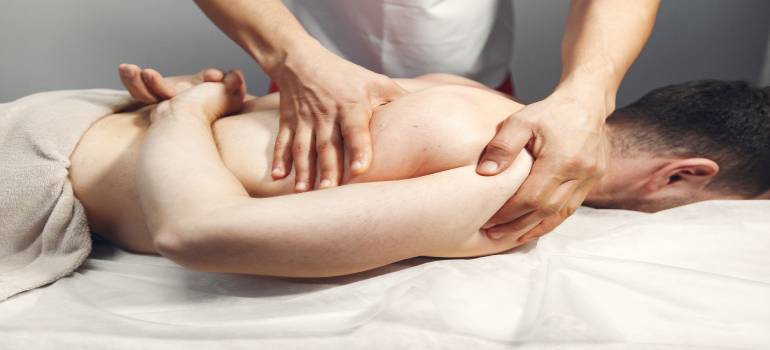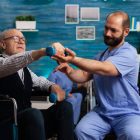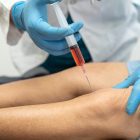Massage therapy has been proposed as a treatment for painful conditions, as different types of pain respond differently to massage.
Therapeutic massage is one such proposed modality that has a number of characteristics, including the fact that it does not require any special equipment, can be given almost anywhere, and has a low risk of serious side effects.
Massage therapy involves manipulating the body’s soft tissues, such as muscles, connective tissue, tendons, ligaments, and joints for therapeutic purposes example stroking, kneading, effleurage, etc. to relieve pain and promote healing. Depending on the technique, therapeutic massage can be both stimulating and soothing.
Indications of massage therapy for back pain are-
- Acute/Chronic Low back pain- For acute back pain: Massage therapy may alleviate the pain by releasing the muscle spasms which are resultant of acute episode of back pain. For chronic back pain: Massage therapy improves blood circulation and leads to increase of endorphin levels which diminishes perception of pain.
- Soft tissue injury- Massage therapy can be given over soft tissue injury or over altered tone tissues, massage can be provided as treatment for symptoms of soft tissue dysfunction.
- Trigger points- Myofascial pain syndrome/ trigger points can be managed through various techniques of massage therapy example ischemic compression technique (sustained pressure) over trigger point.
- Spasm/Stress- Spasm/ hypotonic muscles can be easily treated by massage therapy, while for stress massage therapy may provide relaxation by releasing endorphin hormone.
- Muscle tension- Massage therapy reduces pain and improve range of movement.
- Sciatica- Releasing posterior chain through massage therapy along with other techniques may alleviate sciatica/ sciatica symptoms.
- Abnormal curvature of spine- Deep tissue massage along with stretching and strengthening protocol can provide significant changes in abnormal curvature of spine.
- Arthritic conditions- Arthritic conditions such as rheumatoid arthritis, osteoarthritis, ankylosing spondylitis can be treated by massage therapy which will relieve pain and can slow down the degeneration of cartilage.
Purpose of massage therapy:
- Helps in reducing muscle tension
- Helps in improving blood circulation
- Promotes lymphatic drainage
- Induces relaxation
- Improves joint mobility/ flexibility
- Enhances soft tissue recovery.
Contraindication of massage therapy:
- Fever- Fever could be increased after massage therapy
- Skin Disorders- Few skin disorders are contagious in nature example ringworm, herpes simplex, scabies etc. few disorders can get worse through massage therapy example psoriasis, eczema, rashes etc.
- Burns- Massage can aggravate these conditions, exacerbating the problem.
- Open wounds- Any recent injury which led to open wounds, cuts will be contraindicated for massage therapy as inflammatory signs will be present over such sites and can make the condition worse
- Thrombosis/ Blood clot- Thrombosis or blood clot is major contraindication for massage therapy as massage therapy can dislodge the clot and can spread to lungs through bloodstream creating life threatening condition pulmonary embolism.
- Acute inflammatory conditions- Inflammation or inflammatory signs are relative contraindication for massage therapy, conditions such as bursitis, tendonitis, rheumatoid arthritis, flared episode of ankylosing spondylitis.
- Uncontrolled High blood pressure- Hypertension is also a relative contraindication for massage.
- Cardiac diseases- Heart problems are relative contraindication for massage therapy, in case of heart attack, pacemaker and patient’s taking anticoagulant are absolutely contraindicated for massage.
- Liver/Kidney conditions- Massage can have adverse effect if you have liver/kidney conditions due to increased blood flow.
- Severe/High intensity pain- Massage can aggravate the condition.
- Altered sensation- Patients having altered sensation may not be able to provide correct feedbacks so massage therapy should be avoided.
- Mechanism of massage therapy:
Massage can create mechanical strain, which is thought to improve muscle mechanics, resulting in improved joint range of motion, reduced passive and active stiffness. Massage therapy is thought to minimize neuromuscular excitability, which can be assessed by Hoffman reflex, massage therapy reduces muscle tension and activates sensory receptors.
Combining massage therapy with other treatments:
Massage, when paired with exercises and postural education, can be more helpful for patients suffering from subacute and chronic non-specific low-back pain.
A combination of techniques is often needed, in the case of radiating symptoms such as Sciatica, massage therapy if provided with other techniques such as dry needling, cupping therapy, non-surgical spinal decompression, electrical stimulation, stretching, and strengthening may give more effective results.
For inflamed tissues, massage therapy given along with cold packs and ultrasound therapy will heal the tissues easily and early.
For abnormal curvature example scoliosis, kyphosis, lordosis – deep tissue releases along with specifically customized stretching and strengthening protocol will improve the curvature.
For postural conditions massage therapy along with postural advice, stretching, strengthening and products such as back support and laptop support will help patients relieve postural conditions effectively.
For more information kindly contact Orthocure clinics.





